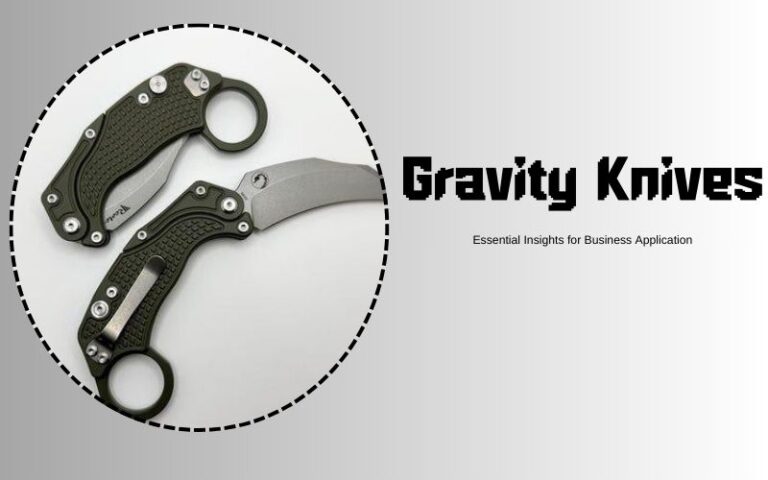“Pikal” is a term derived from the Visayan dialect in the Philippines, and it literally means “to rip.”
It is a combat technique involving the use of a knife, which is prominently featured in indigenous Philippine martial arts like Pekiti-Tersia and the Sayoc family system, among others.
When using Pikal, the knife is held in a reverse grip with the blade facing towards the body, and it relies on thrusting movements.
The angles of attack can be simplified as forehand and backhand strokes, regardless of whether they are diagonal, horizontal, upward, or downward.
Recently, there has been a surge of online discussions and activities related to Pikal.
This article aims to explain some concepts to individuals who are interested in understanding their application. It also presents one person’s interpretation and expression of Pikal.
Basic Expressions of Pikal – Flow Drills
There are various flow drills that can be used to express Pikal, but, for the most part, they tend to be unnecessary and make the system more complicated than it should be.
While flow drills are useful for learning the mechanics, they are not meant for actual combat.
It is important to focus on drills that are relevant, such as knife-tapping and Sigan-Labo, master the skills they offer, and then transition quickly to practical application.
Pikal is often known as a direct and aggressive approach. The objective is not to flow harmoniously with the opponent, but rather to forcefully penetrate through them, resembling the rapid and precise movements of a sewing machine.
However, there are proponents who attempt to oversimplify Pikal as a means to compensate for their lack of formal education in a system that incorporates Pikal.
This oversimplification disregards the fundamental markers that drive the effectiveness of Pikal, which include footwork, power, and body mechanics.
Without these essential practices, the system loses its vitality and much of its effectiveness. Footwork plays a crucial role in closing the distance and making successful strikes. Without it, the system becomes limited and loses its aggressive nature.
Power is what propels the blade and enables it to penetrate flesh and clothing. Proper mechanics allow for the manipulation of the interrupted thrust line, which is a principle that the author personally emphasizes in their interpretation of Pikal.
By focusing on these attributes, Pikal can be truly effective in combat situations.
In-Depth Application of Pikal
Proper Stance and Body Positioning in Pikal
The proper stance in Pikal involves positioning the weapon side forward, with the point of the weapon facing the opponent.
The unencumbered hand is held behind the weapon. It is advisable to stay on the balls of the feet for better mobility and quick movement in and out of striking range. Maintaining a compact stance is essential.
Mastering the Primary Technique: The Quick Back-Hand Jab
The primary technique in Pikal is the quick back-hand thrust known as the jab.
This technique draws inspiration from the edge-of-hand blow used in WWII Close Combat and the eye-jab technique in FMA (Filipino Martial Arts) in terms of maneuvering.
The jab is executed in a non-telegraphic manner and is directed straight out from the knife’s current position. In the following two pictures, we will demonstrate how to initiate the jab from our stance.
Executing a Straight and Stable Jab
When performing the jab in Pikal, it is important to maintain a straight path towards the target, without wavering up or down.
In the picture, you can see that the jabbing arm has slightly moved downwards from the face towards the armpit. This adjustment helps ensure stability and accuracy in the jabbing motion.
Maximizing Power and Speed in the Jab
As the jab reaches its full extension and makes contact with the target, it is crucial to angle the body slightly to increase reach.
Utilizing the shoulder and hip adds power to penetrate the target with the tip of the blade. It’s important to remember that the intention is to penetrate the human body, which may offer varying levels of resistance.
Therefore, it is essential to develop a hard-hitting and swift jab that is difficult to counter.
When retracting the jab, follow the same path inward as you did outward. To enhance speed, focus on retracting the jab twice as fast as you extended it.
This practice not only improves speed but also builds the necessary power to effectively hook a limb and cut through to the bone.
Mastering the Jab: Versatile and Aggressive Tactics
The jab serves as the primary tool in Pikal, effective at various ranges.
Once you develop a proficient jab, it can be utilized to keep opponents at a distance or to close the gap.
Jabs should be executed rapidly and forcefully, emphasizing speed and power.
In this approach, the energy is more akin to a felony offense rather than the flowing nature of traditional FMA (Filipino Martial Arts). The Pikal method adhered to is straightforward and uncomplicated.
- Begin by leading with rapid-fire jabs aimed at high, mid, and low targets. These jabs should be delivered swiftly and forcefully.
- If any interruption occurs to your jabbing hand, seize the opportunity to simultaneously strike or kick while hooking the interrupting limb. Follow through by cutting through the interrupting limb to the bone.
- Use your off-hand to clear the interrupting limb from your jabbing path and continue thrusting. Incorporate knee strikes, low-line kicks, elbow strikes, and body manipulation alongside your jabs.
This forms the core strategy. It proves effective against opponents regardless of whether they are armed with a knife or not.
The subsequent series of pictures depict an armed opponent, but the scenario could easily involve multiple opponents wielding different objects or nothing at all.
In the presented picture, the adversary has interrupted the back-hand thrust with his right arm.
Additionally, he is armed with a knife.
With forward momentum, the next move involves driving forward and hooking the opponent backward, thereby severing their weapon arm. Simultaneously, a powerful palm strike is delivered to their face.
This technique is effective due to the positioning of the knife’s edge on the inside, rather than the outside.
After delivering the strike, the person swiftly executes a sweeping motion to bring down the opponent’s weapon arm, applying a sharp and forceful driving and hooking action.
This maneuver momentarily immobilizes the opponent, creating a pinning effect.
Applying Continuous Pressure and Targeted Thrusting for Maximum Impact
While maintaining constant pressure, the individual executes a forceful thrust into the opponent’s mid-line using a forehand motion.
They proceed with a rapid and powerful series of thrusts along the forehand line, focusing on the abdomen, chest, and neck.
It is important to note that the objective is not to disarm the opponent directly but rather to induce blood loss and trauma, ultimately leading to disarmament.
Intercepting and Mirroring Positions in a Forehand Thrust Exchange
In the presented image, both individuals have executed a forehand thrust, resulting in an interception on the inside line of the attack.
Consequently, their positions reflect a mirrored image of each other.
While it cannot be assumed that the opponent possesses knowledge of hooking techniques, if they do, the determining factor becomes who can successfully execute the maneuver first.
Resolving Impasses and Seizing Initiative through Tactical Strikes
Traditionally in FMA, the challenge encountered in this scenario would typically be addressed through a segment of a flow drill.
However, the most efficient course of action to break the impasse is to swiftly target the low line with a knee strike or a low-line kick.
By doing so, you disrupt the opponent’s OODA (Observation, Orientation, Decision, Action) loop and establish your own initiative in the assault.
When executing a knee strike or kick, it is essential to hook the opponent’s interrupting limb with the inner edge of your blade while forcefully driving your weapon backward.
This momentarily immobilizes the opponent, creating a temporary jam.
Achieving success in this technique requires adept footwork and a forward-driving approach.
It should be noted that adopting a “give and take” attitude will impede the effectiveness of this strategy, as it necessitates a commitment to assertive action.
Upon successfully executing the hook, shear, and clear techniques, the individual proceeds to maintain the established forehand thrusting line.
Coordinated Defensive Tactics: Countering a Forehand Thrust
In this scenario, the opponent initiates the attack with a forehand thrust targeting the midline.
To counter this, the individual swiftly jams the threat using their weapon hand, which is closest to the incoming strike.
Simultaneously, they drive forward with a palm strike aimed at the opponent’s face. These actions seamlessly blend into a single fluid motion.
Following the successful jam and strike, the individual proceeds by cross-jamming the opponent’s interrupting arm into their own body, while delivering thrusts along the opponent’s midline.
Reacting Strategically: Countering a Forehand Attack
In response to the opponent’s forehand strike, which has caught the individual on the inside arc, a specific course of action is required.
Due to the positioning, the left hand of the individual is closest to the opponent’s knife.
Consequently, the immediate priority is to jam the opponent’s weapon hand along the inside line.
Simultaneously, while executing the jamming maneuver, the individual propels forward with a forceful backhand thrust aimed at the opponent’s midline.
Tactical Maneuver: Hooking and Passing the Weapon Hand
The next step involves hooking the inside of the opponent’s weapon hand and initiating a downward pass, directing it into the opponent.
Successfully executing this technique hinges upon maintaining forward pressure and understanding the extent to which the passing arm needs to be extended in order to keep the opponent’s blade away from the individual’s torso.
Low-line passing, which is effectively honed through a flow drill like knife tapping, provides a practical sense of this skill that is challenging to develop through other means.
It is important to acknowledge that low-line passing carries inherent risks compared to high-line passing, but it may still be necessary in certain situations.
During the execution of the passing technique, involving the knife being passed across the body while pivoting the hips, an additional action is performed.
Simultaneously, the individual delivers a forceful palm strike to the opponent’s face using their left hand.
This combination of passing the knife and delivering a strike adds a coordinated element to the movement sequence.
Continuous Offense: Cross Checking and Forehand Thrusting
Following the palm strike, the individual swiftly transitions to the next move. They employ a cross-check technique by using their left hand to strike the opponent’s elbow.
This action is followed by initiating a forehand thrusting line, targeting the opponent’s abdomen, groin, and inner thigh.
The objective is to maintain a continuous offensive approach, swiftly progressing from one maneuver to the next.
Reacting to a Backhand Slash: Engaging the Weapon Hand
In this scenario, the opponent executes a slashing motion with a backhand strike.
Recognizing the proximity of their left hand to the opponent’s weapon hand, the individual promptly engages by intercepting it from the outside.
Advancing with Precision: Opening Up the Opponent
To maintain forward momentum and engage at close range, the individual employs a technique involving passing the opponent’s weapon down and into them.
Simultaneously, they drive forward with a forceful forehand thrust of their own.
While it is typically preferable to stay on the outside, the individual’s body position necessitates a slight adjustment.
In order to effectively utilize their blade and continue pressing forward, they strategically create a small opening in the opponent’s defense.
Swift Defense and Counterattack: Jamming and Midline Thrusting
In response to the opponent’s forehand slash, the individual quickly adapts by jamming the attack using their left hand.
Due to their positioning, this defensive maneuver becomes necessary. Immediately following the jam, the individual swiftly thrusts along the opponent’s midline as a counterattack.
This coordinated action aims to neutralize the attack and seize control of the situation.
Disrupting Rhythm: Employing a Swift Knee Strike
Following the successful jam and thrust, the individual capitalizes on the opportunity to further destabilize the opponent by rapidly executing a knee strike.
This strategic move aims to break the opponent’s rhythm and create a momentary disruption, providing an advantage for the individual.
Seamless Transitions: Passing and Maintaining Initiative
Upon delivering the knee strike, the individual proceeds to execute a high-line pass of the opponent’s knife using their weapon hand.
The pass is directed towards the outside, allowing for effective control and manipulation of the weapon.
Finishing with Precision: Forehand Thrust to the Neck
To conclude the sequence, the individual executes a final move with a powerful drive, delivering a forehand thrust aimed at the opponent’s neck.
This precise and targeted strike aims to incapacitate the opponent and effectively end the encounter.
At the highest point of the passing motion, the individual capitalizes on the opportunity to maintain dominance by forcefully delivering an edge-of-hand blow to the opponent’s ribs.
This strategic strike serves to prevent the opponent from regaining any initiative, further solidifying the individual’s control over the encounter.
In summary, it is important to avoid unnecessary and flowery flow drills when practicing Pikal. Instead, prioritize relevant drills that can be quickly applied in real scenarios.
A direct and forceful approach is advocated, emphasizing the importance of footwork, power, and body mechanics.
By embracing these attributes, Pikal can retain its effectiveness and become a potent combat technique.
Asporto
In conclusion, these dynamic techniques and tactical maneuvers showcased throughout the sequences highlight the effectiveness and strategic nature of Pikal.
By mastering the principles of flow, timing, precision, and continuous pressure, practitioners can develop a formidable skill set for self-defense and combat.
Remember, diligent practice and a comprehensive understanding of Pikal’s core concepts will empower individuals to navigate confrontations with confidence and assertiveness.
Stay committed to honing your skills and always prioritize safety in your training!
Clicca per avere di più Coltelli Shieldon EDC e strumenti divertenti.




